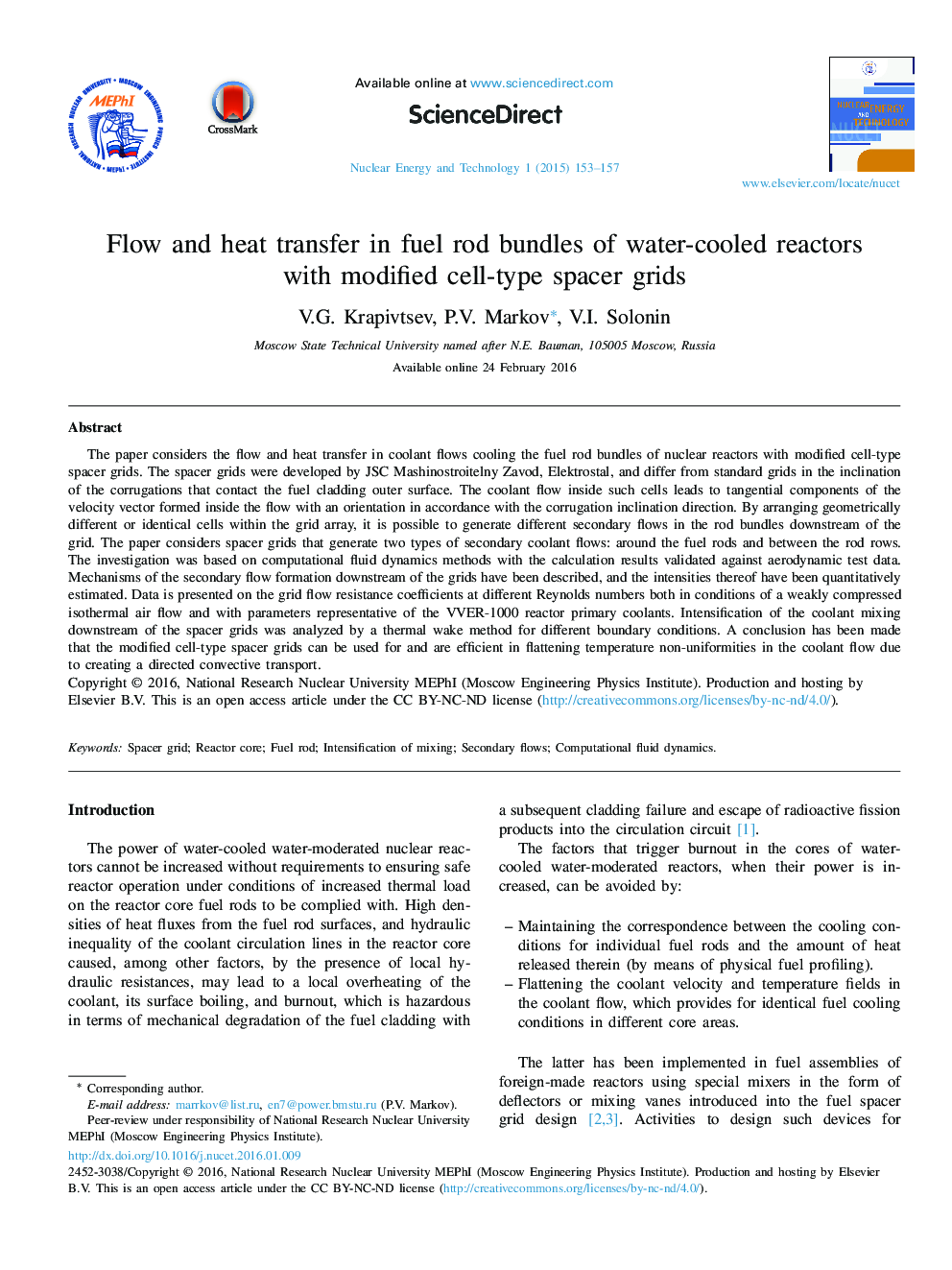| Article ID | Journal | Published Year | Pages | File Type |
|---|---|---|---|---|
| 366606 | Nuclear Energy and Technology | 2015 | 5 Pages |
The paper considers the flow and heat transfer in coolant flows cooling the fuel rod bundles of nuclear reactors with modified cell-type spacer grids. The spacer grids were developed by JSC Mashinostroitelny Zavod, Elektrostal, and differ from standard grids in the inclination of the corrugations that contact the fuel cladding outer surface. The coolant flow inside such cells leads to tangential components of the velocity vector formed inside the flow with an orientation in accordance with the corrugation inclination direction. By arranging geometrically different or identical cells within the grid array, it is possible to generate different secondary flows in the rod bundles downstream of the grid. The paper considers spacer grids that generate two types of secondary coolant flows: around the fuel rods and between the rod rows. The investigation was based on computational fluid dynamics methods with the calculation results validated against aerodynamic test data. Mechanisms of the secondary flow formation downstream of the grids have been described, and the intensities thereof have been quantitatively estimated. Data is presented on the grid flow resistance coefficients at different Reynolds numbers both in conditions of a weakly compressed isothermal air flow and with parameters representative of the VVER-1000 reactor primary coolants. Intensification of the coolant mixing downstream of the spacer grids was analyzed by a thermal wake method for different boundary conditions. A conclusion has been made that the modified cell-type spacer grids can be used for and are efficient in flattening temperature non-uniformities in the coolant flow due to creating a directed convective transport.
